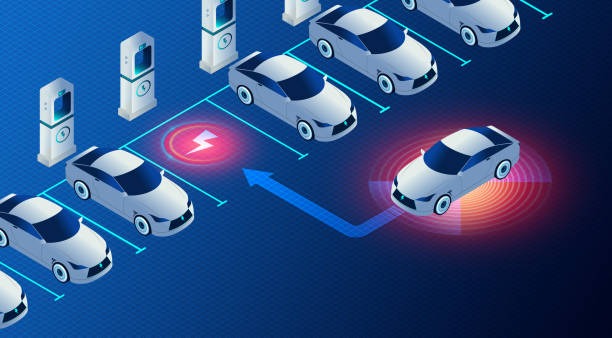Menu list
- Introduction to Sustainable Transportation
- Advancements in EV Charging Technology
- Benefits of Modern EV Charging Solutions
- Obstacles and Remedies in the Electric Vehicle Charging Sector
- The Role of Policy and Regulation
- Case Study: Successful Implementations
- The Road Ahead: Future Trends in Sustainable Transport
- Conclusion: Embracing Sustainable Transport
Introduction to Sustainable Transportation
The need for sustainable transportation has never been more critical in today’s world. As we witness the adverse impacts of pollution and climate change, the shift towards greener alternatives is imperative. Electric vehicles (EVs) lead this trend, providing a cleaner and more sustainable means of transportation. However, an efficient and expansive charging infrastructure is essential for EVs to become viable. It is where innovations in EV charging come into play: https://www.delta-americas.com/en-US/products/EV-Charging/ALL/. By expanding and enhancing charging networks, cities can significantly reduce their dependency on fossil fuels, thereby reducing their carbon footprints. The last decade has seen a remarkable shift in public and governmental perception regarding electric vehicles. With increasing pressure to address environmental concerns, deploying cutting-edge charging facilities has become a priority. The advancement of this infrastructure is not just a functional requirement but a crucial step towards instigating large-scale adoption of EVs. It’s no longer just about vehicles on the road but about making the entire ecosystem sustainable, from energy generation to consumption.
Advancements in EV Charging Technology
EV charging technology has seen quantum leaps in recent years, with innovations that promise to overcome previous limitations associated with electric vehicles. One of the most significant developments is integrating AI in managing charging stations. AI facilitates more innovative scheduling by predicting demand at various times and locations and optimizing for energy efficiency. EV drivers can have more predictable charging times with less stress on the electric grid, ultimately leading to better resource management.
Moreover, solar-powered charging stations represent a promising future for renewable energy integration. Utilizing solar panels to harness renewable energy reduces electric vehicles’ carbon footprint. By generating power directly from sunlight, these stations minimize the reliance on traditional power grids, making EVs even more sustainable. In cities worldwide, pilot programs successfully implement these solar solutions, proving that a greener future is possible.
Benefits of Modern EV Charging Solutions
Modern EV charging solutions bring benefits beyond environmental advantages. From an economic standpoint, the transition to electric mobility can result in substantial savings for people. With less wear and tear compared to combustion engine vehicles and the lower cost of electricity compared to gasoline, the long-term financial benefits are apparent. Furthermore, the growing charging station network contributes positively to public infrastructure, creating jobs and fostering local economic development. For consumers, this means not having to alter their daily routines significantly. Whether a vehicle is being charged at home overnight or on a rapid charging network while out, the flexibility provided by these advances seamlessly integrates into various lifestyles.
Obstacles and Remedies in the Electric Vehicle Charging Sector
Even as the EV charging industry strides forward, several challenges must be addressed to facilitate the widespread adoption of electric vehicles. One of the primary hurdles is the cost of setting up infrastructure. High initial investment can be a deterrent, particularly in less populated regions where the return on investment is not as immediately evident. Furthermore, existing grid capacity often struggles to meet the demands of new charging stations, raising concerns about potential overloading and power outages. Addressing these challenges requires a collaborative approach. Government subsidies and incentives can mitigate cost barriers, encouraging private companies to invest in charging infrastructure. Moreover, technological advancements aimed at grid optimization can alleviate capacity constraints. By investing in smart grid technology and energy storage solutions, stakeholders can ensure more stable and efficient energy consumption, driving the industry forward.
The Role of Policy and Regulation
Policy and regulation are key pillars in the growth of the EV charging industry. Governments worldwide play an instrumental role by introducing policies that promote infrastructure deployment and ensure fair market practices. Subsidies for EV purchasers, tax incentives for companies installing charging stations, and grants for research and development are just a few examples of how policy can encourage EV adoption. Furthermore, regulations need to evolve to accommodate the growth of EV infrastructure. Streamlining zoning laws and simplifying the permitting process can expedite the rollout of new stations. By harmonizing standards and rules across regions, governments can remove barriers and enhance the effectiveness of new developments. A comprehensive regulatory framework will support the industry’s growth and set a precedent for future technological evolutions in transportation.
Case Study: Successful Implementations
Looking at real-world examples can provide valuable insights into the successful implementation of EV charging networks. Oslo, Norway, stands out as a leader in this arena, with thousands of charging stations installed throughout the city. This move has been part of a broader initiative to reduce vehicle emissions and promote electric vehicle ownership.
Oslo’s success can be attributed to the collaborative efforts between government entities, businesses, and local communities. By focusing on creating a reliable and accessible charging infrastructure, Oslo has dramatically increased EV adoption among its residents. Such initiatives underscore the importance of well-planned infrastructure development and the lasting benefits of such investments.
The Road Ahead: Future Trends in Sustainable Transport
As technology continues to evolve, so does the landscape of sustainable transportation. Vehicle-to-grid (V2G) technology, enabling electric vehicles to store energy and return it to the grid, is one of the numerous encouraging trends within the industry. This advancement could convert EVs into portable energy sources, providing ancillary services to the power grid and enhancing energy reliability and efficiency. Similarly, the development of autonomous electric vehicles (AEVs) may redefine the concept of mobility itself. Advancements in autonomous technology are likely to converge with EV innovations, introducing a new era of transportation. Integrating smart traffic management systems with driverless EVs can optimize route efficiency, reduce congestion, and decrease urban emissions. As we move towards an increasingly interconnected world, these advancements promise to craft a more sustainable and intelligent transportation landscape.
Conclusion: Embracing Sustainable Transport
The advancement in EV charging technology signifies a broader commitment to a sustainable future. As innovations in this field continue, we collectively move closer to achieving global sustainability goals. By integrating these technologies and supporting infrastructure developments, communities worldwide are taking critical steps towards a greener future.
Individuals, organizations, and governments must maintain momentum in this direction, fostering a transport ecosystem where sustainability is the norm, not the exception. As we aim to curtail transportation’s detrimental environmental impact, the progress made in EV charging will play a definitive role, paving the way for a cleaner, more sustainable tomorrow.





